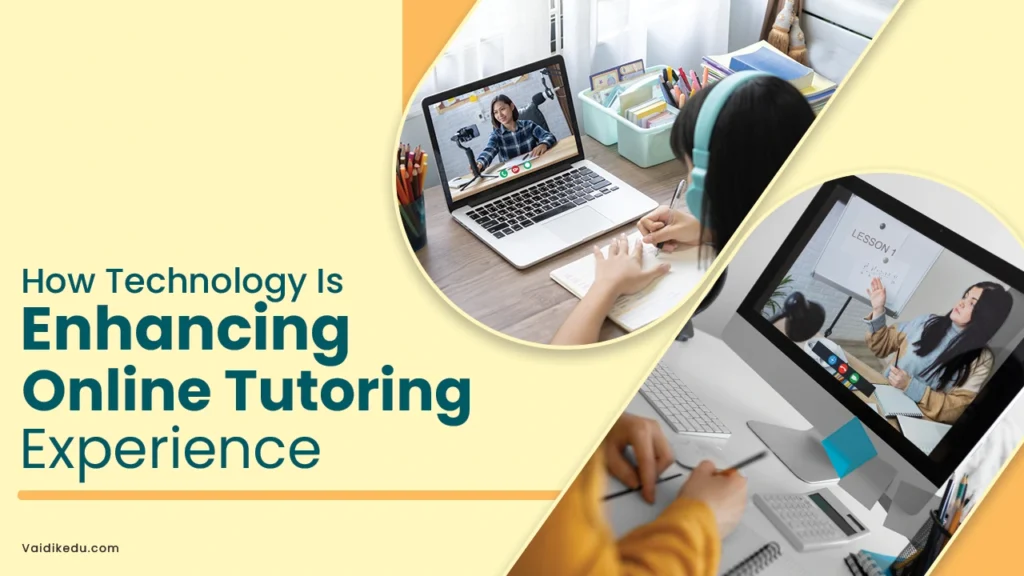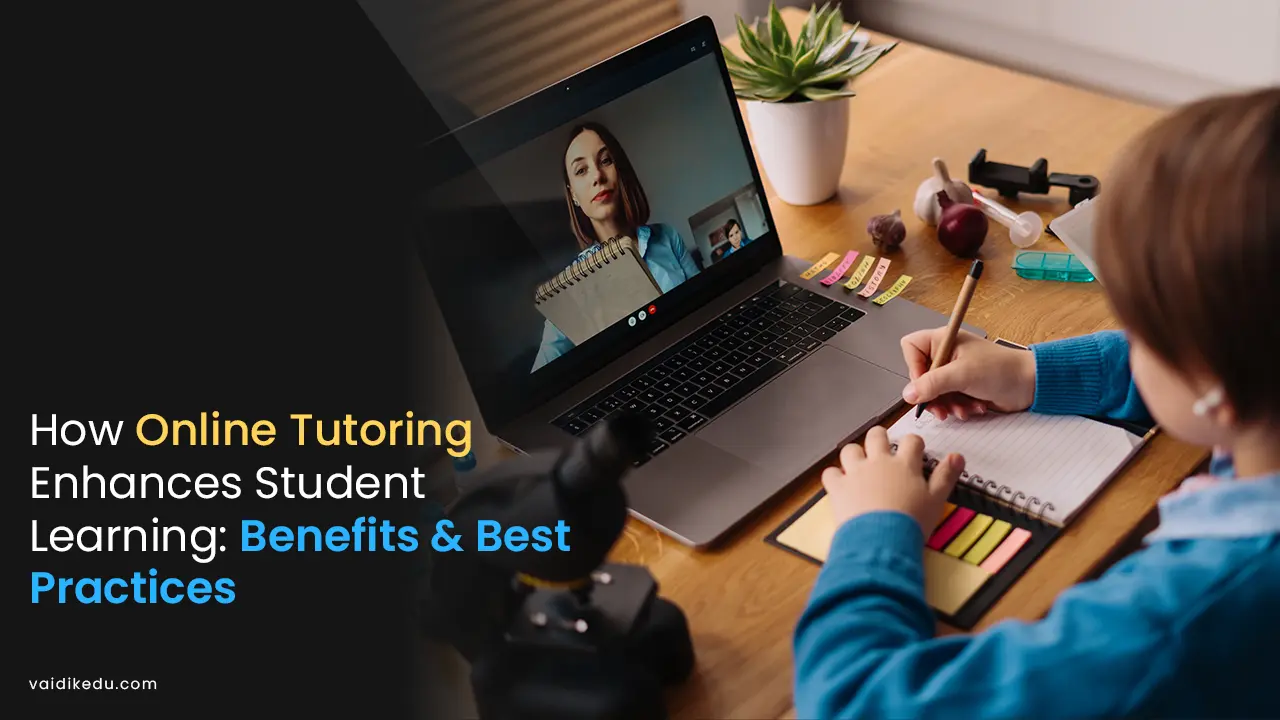Online tutoring is a way of interaction through which teachers can teach and students can study online with the help of the internet and a learning platform. As COVID-19 emerges, online tutoring has increasingly developed.
For making online tutoring work properly, technology plays an important role. Due to the advancement of technology, various things become possible such as conferencing platforms and artificial intelligence (AI). This blog explains the role of technology in improving the online teaching experience.
Development of Online Tutoring: Online learning started as a simple extension of traditional learning using basic tools like email and discussion boards. However, rapid technological innovation has completely changed the landscape.
The launch of high-speed internet, cloud computing, and AI-powered platforms have created dynamic, interactive environments that bridge the gap between physical classrooms and virtual learning spaces.
Today, online learning offers a real-time educational experience that is tailored to individual needs and specific persons. Sometimes they just can’t imagine it.
Benefits of Technology in Online Teaching:
Access: Technology has removed geographic barriers. This allows students to connect with specialized tutors around the world. Whether in the city or a remote area, students can access quality education.
Personal Learning: An adaptive learning system tailors the curriculum to meet the unique needs of students. This ensures that students understand the concepts at their own pace. This personalized approach improves confidence and academic performance.
Cost And Benefits: Private online classes generally reduce costs associated with physical infrastructure and travel. Many platforms offer more accessible subject models. Various online education platforms provide a low-cost subscription that can be accessible to various students around the world.
Flexibility: Technology provides support for asynchronous learning in which students are allowed to access the classroom and resources at all times. This flexibility benefits both working professionals and students with shared agendas.
Real-Time Feedback: The AI model and interactive platform provide immediate feedback on tasks, questionnaires, and assessments. This immediate response helps students quickly identify and correct errors.
Enhanced Participation: Interactive activities such as game-based quizzes and AR/VR experiences help students engage, transform, or learn in a fun way instead of hard work
Data-Based Insights: These analytical tools provide valuable information about student progress. It allows teachers to adjust their teaching strategies. Parents and students can also track their academic growth over time.
Key Technologies That Revolutionize Online Teaching
Video Conferencing Tools: Video conferencing tools can be done through platforms such as Zoom, Google Meet, etc enabling us to meet with anyone face-to-face via virtual environment. These tools offer features such as screen sharing. virtual whiteboard and recording sessions It ensures smooth communication between teachers and students.
Artificial Intelligence (AI): AI analyzes student strengths and weaknesses and promotes personal learning paths AI-powered tools can optimize content delivery. Give feedback immediately and predict areas where students may encounter difficulties.
Learning Management System (LMS): LMS includes platforms such as Moodle and Blackboard to help teachers organize resources. Follow the progress and engage students with quizzes and homework. It also helps students to learn at their convenience.
AR And VR: AR stands for Augmented reality and VR stands for virtual reality. These two platforms provide us with very different and good learning experiences in science and history. With the help of AR and VR, students can see the 3-dimensional structure of the human body and they can also virtually visit real historical sites such as monuments and temples.
Interactive Whiteboard: Digital whiteboards like Jamboard and Miro allow for real-time collaboration. Teachers can express ideas, solve problems, and share ideas interactively. Just like you would in a real classroom.
Gameplay: An online platform that incorporates game-based learning to keep students motivated. Features such as badges, leaderboards, And the points system make learning fun and promote healthy competition.
Cloud Computing: Cloud technology facilitates the storage and sharing of enormous amounts of educational resources. Students and teachers can access files, videos, and e-books from anywhere to feed the world.
Challenges And Solutions:
Although there are many benefits online teaching still faces technological challenges:
Digital Department: Some students do not have access to reliable internet or devices. The government and various organizations should work together to bridge this gap by providing affordable devices and connectivity solutions.
Too Much Reliance on Technology: Excessive screen time and reliance on digital tools can affect mental and physical health. Striking a balance between using technology and offline activities is important.
Safety Concerns: Online platforms are vulnerable to data breaches and cyber threats. Investing in strong cybersecurity measures can protect sensitive data.
Technical Issues: Technical errors may interrupt the learning session. Training teachers and students on the use of digital tools can alleviate this problem.
The Future of Online Teaching:
It is expected that the integration of technology in education will only increase. Emerging trends such as AI-powered virtual tutors, and blockchain for secure identities. and advanced analytics for personalized studies. It will further enhance the online teaching experience.
Additionally, the focus will remain on creating more inclusive and sustainable education solutions. Online teaching has the potential to reduce educational inequality by serving underserved communities. Increased internet availability will mean more students will benefit from high-quality teaching.
Online tutoring platforms can provide scholarships, grants, and free resources to ensure education is accessible to all regardless of socioeconomic status. Online teaching isn’t just for school-aged people.
It is also useful for adults who are looking to learn new skills and technologies to improve their performance at work. Schools and universities can incorporate online teaching as part of their curriculum. By providing additional support to students outside of class time.
Frequently Asked Questions
Technology has changed traditional learning by introducing virtual tools. Allows for distance learning and provides personalized learning tailored to the needs of each student.
Common tools include video conferencing platforms (Zoom, Google Meet), LMS (Moodle, Blackboard), AI-powered systems, and interactive whiteboards (Jamboard, Miro).
AI improves online teaching by providing a personalized learning experience. Instant feedback and predictive insights into student performance.
Challenges include: the digital divide; Too much reliance on technology Cyber Security Concerns and technical problems in the session.
The future includes integrating AI, blockchain, and advanced analytics to create a comprehensive online teaching experience. More efficient and personal.









